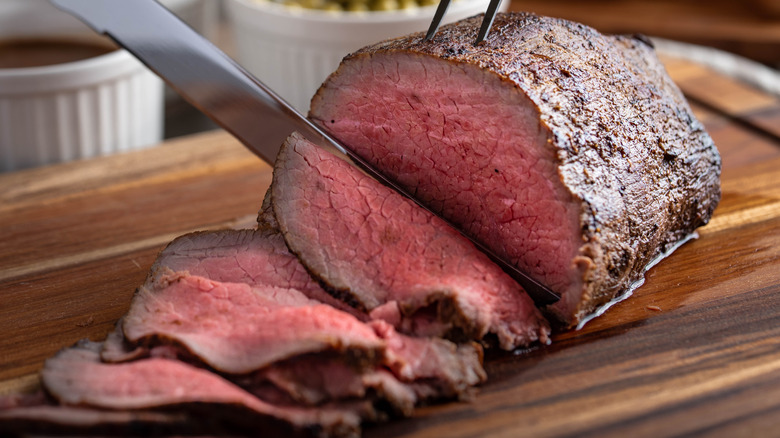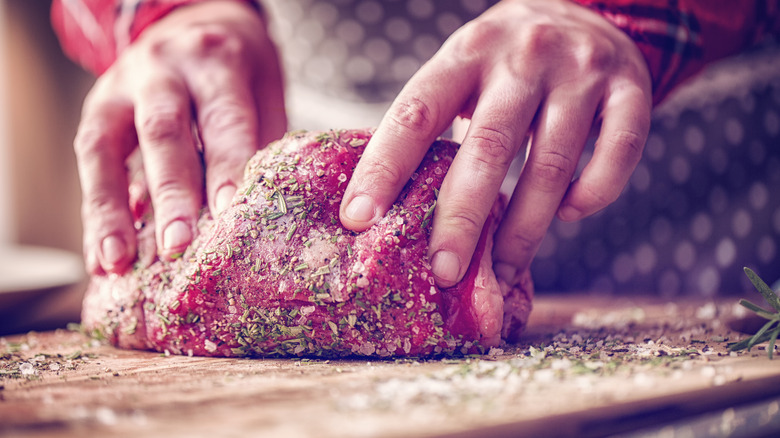The Temperature Tip To Remember Before Roasting Meat
Temperature control is everything when it comes to roasting meat. Between knowing when to cover and which meats work best with the combination method, getting an even cook all the way through the cut can be tricky. However, the first and arguably most important step is simple: Let your roast reach room temperature before sticking it in the oven.
Trying to cook thick cuts of pork, beef, or whole poultry straight from the fridge introduces a significant discrepancy in cook times between the outside and the core. While the outer portions will heat up quickly from contact with air that's between 325 to 450 degrees Fahrenheit, it will be a while before the insulated middle starts cooking at all. In this situation, the exterior dries out while you wait for the center to heat to safe temperatures. But letting the roast get closer to room temperature beforehand helps the middle heat up much more quickly and plays a huge part in avoiding an unsatisfying result.
Safely tempering your meat roast
This process is known as "tempering" your meat, and it is perfectly safe, so long as you make sure you are not leaving raw meat on the counter for too long. The U.S. Department of Agriculture recommends avoiding leaving raw meat out for more than two hours, as that's the organization's safe window for which food can sit within the "Danger Zone" of 40 to 140 degrees Fahrenheit. But that should be ample time to bring a fully thawed cut to temperature. Letting it sit for however long it takes you to prep the rest of the ingredients should be more than enough.
Do note, however, that the USDA recommends no more than one hour of exposure in temperatures 90 degrees Fahrenheit or higher; if you're prepping your summertime roast for an outdoor brick or portable oven, you'll want to allow your meat to temper indoors.

